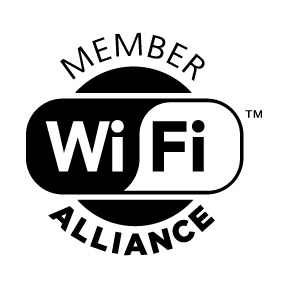I remember it like it was yesterday. I was standing in the audio dept of a particular big box retailer where I worked. A middle-aged man approached our wall of receivers, pointed to a particular name brand that was on the higher end of the pricing scale and asked me “how is this one?” I had my reply all mapped out in my head to try and make the sale and I stated “for starters, it is one of the best you could buy….”. Thinking back to that response, I now ask myself “why was it one of the best”? Why was I taught to say that and how did I know that this was best for that particular customer? It all came back to price. In retail particularly, new employees tend to be trained that the more expensive something is, the better it actually is. I was no different in that I was trained that way and for the first 25-50% of my career I truly felt that way. Rather than learn about features and what differentiates one speaker or receiver from the other, I based a lot of my decisions off price and price alone. I am here to tell you now, BIG MISTAKE! However, this begs the question “when is it appropriate to spend more and when is it not”? As a self-described “lover of headphones” I have bought and tried more headphones in 1 year than most people would in their lifetimes COMBINED! I am always looking for new features like spacial audio, improved battery life, advanced IP ratings, and of course noise cancellation. Through these purchases and tests, I have found “budget brands” that compete extremely well with the $300-$500 headphones but with one big caveat- How am I using the headphones and what features do I really need? For example- why would I need to spend more on advanced noise cancellation when I planned to only use the earbuds running on the street where I absolutely need to hear traffic and my surroundings? On the flip side, I absolutely will pay a hefty price for noise cancellation on my on-ear headphones because those are my saving grace during cross country flights. The answer lies squarely in the details and when it involves any given AV project/design, the same principles can be discussed. Let us dig deeper into those!
 It is commonplace for me to receive an email that asks what I recommend for a specific product. The first line of my reply will generally be to tell me more about the project, how the needed product will be used, the dimensions of the room it’s being used in, and more. This is no different than what I described above in my headphone quest. How I use the headphones is parallel to how will the product/system be used. I will also always ask about the desired budget because I like to know what expectations the customer has and for the sake of this writing, I want to spend the bulk of our time discussing that topic deeper. While working at that same big box retailer back in the 90’s I remember ringing up a sale that I had just closed and the customer in this instance was an older woman who needed a new TV along with some external speakers. Nothing fancy, but good enough that she wouldn’t have a hard time hearing her shows. After handing her the receipt she replied, “you would make a lousy car salesman”. After laughing and feeling partly insulted, she explained “you were so honest and sold me what I needed rather than try to overcharge me for unnecessary bells and whistles”. That same principle applies to how we should approach AV now. As I sit here at my desk, I have 3 different microphones that I have acquired over time. They are not all created equally, but they all could serve a purpose for the right “customer”. Using microphones as our primary example, there are many types – Dynamic, Condenser, USB, Tube, Headset, Boundary, Wireless, and more. Let us also not forget that handy mic that is already built into our laptops. How does someone decide what is suitable, how much to spend, etc.? The proof is in the project/needs analysis I discussed earlier.
It is commonplace for me to receive an email that asks what I recommend for a specific product. The first line of my reply will generally be to tell me more about the project, how the needed product will be used, the dimensions of the room it’s being used in, and more. This is no different than what I described above in my headphone quest. How I use the headphones is parallel to how will the product/system be used. I will also always ask about the desired budget because I like to know what expectations the customer has and for the sake of this writing, I want to spend the bulk of our time discussing that topic deeper. While working at that same big box retailer back in the 90’s I remember ringing up a sale that I had just closed and the customer in this instance was an older woman who needed a new TV along with some external speakers. Nothing fancy, but good enough that she wouldn’t have a hard time hearing her shows. After handing her the receipt she replied, “you would make a lousy car salesman”. After laughing and feeling partly insulted, she explained “you were so honest and sold me what I needed rather than try to overcharge me for unnecessary bells and whistles”. That same principle applies to how we should approach AV now. As I sit here at my desk, I have 3 different microphones that I have acquired over time. They are not all created equally, but they all could serve a purpose for the right “customer”. Using microphones as our primary example, there are many types – Dynamic, Condenser, USB, Tube, Headset, Boundary, Wireless, and more. Let us also not forget that handy mic that is already built into our laptops. How does someone decide what is suitable, how much to spend, etc.? The proof is in the project/needs analysis I discussed earlier.
Let me take you through 5 Steps of “Rob, I need a microphone. Which would you suggest?”
 Step 1: Finding out how the microphone will be used. The customer wants to start a podcast series from home and hopes to eventually expand to an offsite studio. Through questioning, I also found out the customer has 2 young kids at home.
Step 1: Finding out how the microphone will be used. The customer wants to start a podcast series from home and hopes to eventually expand to an offsite studio. Through questioning, I also found out the customer has 2 young kids at home.
Step 2: Through the customer’s answers, my mind shifts to condenser as well as USB microphones. Condenser mics are great when it comes to picking up details in the voice and delivering the “professional” sound that you might find on other podcasts or recorded content. I am also thinking USB for simplicity, but the correct choice for the customer lies in their intentions. If podcasting is just a hobby or something they are tinkering with, it could be wiser to start off with a simple plug-n-play USB mic to learn on the fly, before spending more on a condenser mic with the added accessories that are needed such as a boom arm, usb interface, etc.
Step 3: After learning more about the customer’s intentions of making podcasting a career, we collectively decide that Condenser is the way to go. They love the added feature of having switchable polar patterns because of those 2 young children running in the background and they are worried that the mic could pick up that noise. Mic polar patterns will determine the space/area that a mic will focus on in regard to picking up sound. Omnidirectional picks up everything around the mic (not proper if you have small children or pets nearby while recording) while Cardioid is ideal for podcasters because it picks up only the front of the microphone where the host is speaking into. In terms of pricing, a decent condenser mic could retail for $200 as a starting point but increase up to $1000+ depending again on features, details in sensitivity and durability amongst others. In comparison with a USB mic, which typically sells for $99-$200 and nothing else is needed to set up.
Step 4: We now know Condenser is the way to go, but don’t forget to complete the puzzle for the customer! You need the essential items to make it all work! For purposes of podcasting, you would look at a boom arm/stand to mount the mic, an XLR cable, a shock mount for the mic, a pop filter, some type of usb interface/usb mixer, and then expand into cameras, speakers etc. Those essentials could also vary in cost depending on the functionality and quality but could add an additional $300-$500 to the mix to start. Budget applies to these essentials as well and that is proven by what I call the “Boom Arm Debacle”. Microphones come in varying shapes, sizes, and weights. When purchasing a boom arm or table stand the weight needs to be known. The first boom arm I ever bought, which can be considered on the cheaper end of the spectrum, refused to stay in its proper positioning because it couldn’t support the weight of my mic. Having gone and spent a little bit more ($200) on a better rated boom arm, I no longer have that issue. Thus, it is not always better to cut costs!
 Step 5: Time to wrap it up with a bow! Because you asked the right questions in the beginning and identified the desired system use, external factors such as children, and variables such as the customer wanting to make this a full time career you were able to recommend the proper mic, proper essentials to add on, but didn’t overcharge the customer so they have a confident feeling that they weren’t just “taken for a ride”. It also gives the customer room to grow. Let’s assume a year from now they are now a successful/viral podcaster with millions of followers and multi-million-dollar endorsements, the need might be there to upgrade to that $1300 condenser mic that triples the amount of selectable polar patterns or has a built-in overload warning to detect problems before they happen. However, you determined that would probably be overkill in the early going as they feel their way through things and gain a comfort level.
Step 5: Time to wrap it up with a bow! Because you asked the right questions in the beginning and identified the desired system use, external factors such as children, and variables such as the customer wanting to make this a full time career you were able to recommend the proper mic, proper essentials to add on, but didn’t overcharge the customer so they have a confident feeling that they weren’t just “taken for a ride”. It also gives the customer room to grow. Let’s assume a year from now they are now a successful/viral podcaster with millions of followers and multi-million-dollar endorsements, the need might be there to upgrade to that $1300 condenser mic that triples the amount of selectable polar patterns or has a built-in overload warning to detect problems before they happen. However, you determined that would probably be overkill in the early going as they feel their way through things and gain a comfort level.
These same concepts and examples I shared can also be applied to speakers, amplifiers, video walls, cabling, and so much more. Do you need the $5 HDMI cable or the $100? The only way of answering that truthfully is by examining the project details and determining where to spend the project budget and where not to. However, it is safe to say that Mo’ Money DOES NOT always mean Mo’ Problems. Challenge yourselves to identify those system needs in your current and future projects, and not only might you find that budget issues become a thing of the past, but customers will respect the thought process you put into it and helping choose what really will work for them.

 Holidays are a time for indulgence, and a hotel with exceptional dining options can add an extra layer of enjoyment to your stay. Explore hotels with on-site restaurants that offer a diverse menu, or ones that speak to your personal tastes and preferences. If you’d enjoy exploring the local cuisine, try taking a look at the near-by restaurants that peak your interest. Be sure to take note of their reservation policies, as local businesses may prefer you book ahead during the holidays.
Holidays are a time for indulgence, and a hotel with exceptional dining options can add an extra layer of enjoyment to your stay. Explore hotels with on-site restaurants that offer a diverse menu, or ones that speak to your personal tastes and preferences. If you’d enjoy exploring the local cuisine, try taking a look at the near-by restaurants that peak your interest. Be sure to take note of their reservation policies, as local businesses may prefer you book ahead during the holidays.
 In the drone solutions space, there now exists two new certifications: Blue and Green UAS.
In the drone solutions space, there now exists two new certifications: Blue and Green UAS. A Green UAS is a subset of cybersecurity certification offered by AUVSI. Green UAS is designed to encompass drones that may not necessarily be manufactured in the US, but rather in allied countries. The Green UAS certification follows closely behind the DIU Blue UAS certification 2.0 program. Meaning, the Green UAS certified aircraft are essentially the same as Blue minus their country of origin.
A Green UAS is a subset of cybersecurity certification offered by AUVSI. Green UAS is designed to encompass drones that may not necessarily be manufactured in the US, but rather in allied countries. The Green UAS certification follows closely behind the DIU Blue UAS certification 2.0 program. Meaning, the Green UAS certified aircraft are essentially the same as Blue minus their country of origin.
 Along with the real-time content transmission, Miracast provides content protection through its support of High-Bandwidth Digital Content Protection – or HDCP. The mechanism oversees the transfer of content between the device that originates the content (the source) and the display device, providing an added layer of security to a user’s digital rights.
Along with the real-time content transmission, Miracast provides content protection through its support of High-Bandwidth Digital Content Protection – or HDCP. The mechanism oversees the transfer of content between the device that originates the content (the source) and the display device, providing an added layer of security to a user’s digital rights. In fact, Miracast technology is available on a variety of wireless devices from
In fact, Miracast technology is available on a variety of wireless devices from 

 Step 1: Finding out how the microphone will be used. The customer wants to start a podcast series from home and hopes to eventually expand to an offsite studio. Through questioning, I also found out the customer has 2 young kids at home.
Step 1: Finding out how the microphone will be used. The customer wants to start a podcast series from home and hopes to eventually expand to an offsite studio. Through questioning, I also found out the customer has 2 young kids at home. Step 5: Time to wrap it up with a bow! Because you asked the right questions in the beginning and identified the desired system use, external factors such as children, and variables such as the customer wanting to make this a full time career you were able to recommend the proper mic, proper essentials to add on, but didn’t overcharge the customer so they have a confident feeling that they weren’t just “taken for a ride”. It also gives the customer room to grow. Let’s assume a year from now they are now a successful/viral podcaster with millions of followers and multi-million-dollar endorsements, the need might be there to upgrade to that $1300 condenser mic that triples the amount of selectable polar patterns or has a built-in overload warning to detect problems before they happen. However, you determined that would probably be overkill in the early going as they feel their way through things and gain a comfort level.
Step 5: Time to wrap it up with a bow! Because you asked the right questions in the beginning and identified the desired system use, external factors such as children, and variables such as the customer wanting to make this a full time career you were able to recommend the proper mic, proper essentials to add on, but didn’t overcharge the customer so they have a confident feeling that they weren’t just “taken for a ride”. It also gives the customer room to grow. Let’s assume a year from now they are now a successful/viral podcaster with millions of followers and multi-million-dollar endorsements, the need might be there to upgrade to that $1300 condenser mic that triples the amount of selectable polar patterns or has a built-in overload warning to detect problems before they happen. However, you determined that would probably be overkill in the early going as they feel their way through things and gain a comfort level.












